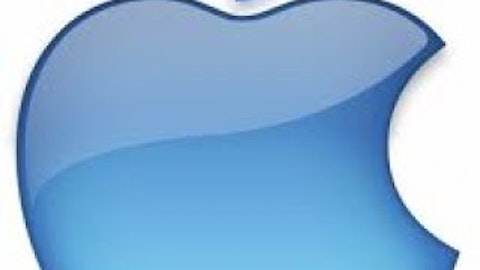Tech investors know that it takes more than a great product to bring in great returns. Tapping the right market at the right time is almost as important as creating the most innovative product. That’s why the latest numbers from the International Telecoms Union, or ITU, are so important.
The data show mobile subscriptions are on the rise, but not all markets are growing, and companies that don’t head the trends could miss out on big gains.
Searching for non-saturation
According to the ITU, by the end of 2014 there will be more mobile device subscribers in the world than people. We’re already ridiculously close, with 6.8 billion mobile subscribers and 7.1 billion people in the world.
The pervasiveness of mobile devices isn’t the most fascinating fact, though, and not even close to what’s important for tech investors. It’s all about where the growth hasn’t occurred. The graph below shows which regions of the world have already reached mobile saturation and which areas still have lots of room for growth.

Source: ITU.
The Commonwealth of Independent States (formerly the Soviet Union) has the highest mobile cellular penetration, while Africa holds the most potential for mobile companies.
Tapping the untapped
The latest numbers from Canalys show Samsung outpacing both Apple Inc. (NASDAQ:AAPL) and Microsoft Corporation (NASDAQ:MSFT) in overall mobile devices shipments, including notebooks. In the first quarter of 2013, Samsung took over 26% of worldwide smart device shipments, Apple Inc. took over 19%, and Microsoft had 18%.

Over the next two years, mobile handset penetration in Africa is expected to grow to 85%, according to the consulting agency A.T. Kearney. Microsoft Corporation (NASDAQ:MSFT) has seen the writing on the wall and has recently ramped up its mobile efforts in South Africa. According to a Bloomberg article, the company aims to be South Africa’s No. 1 smartphone provider by 2016. Microsoft teamed up with Huawei in February to start selling the 4Afrika Windows Phone, at the low-end price of $150 to try to tap into about seven countries in Africa. Microsoft Corporation (NASDAQ:MSFT) hopes to tap into Africa in ways that it hasn’t been able to in more established markets like the U.S. and Europe, by getting in early in the region.
Nokia Corporation (ADR) (NYSE:NOK) has planned its own strategy for the continent as well, with its recent release of its $72 Asha phone. The phone is priced right around other inexpensive Android phones and comes with free lifetime messaging from the popular WhatsApp messaging app. With the growing popularity of cheaper Android phones, Nokia Corporation (ADR) (NYSE:NOK) has lost some of its dominance in Africa and is trying to keep up with the smartphone market. The company’s Asha line could help build that back, but its OS isn’t as feature-rich as the Android phones.
The persistent Research In Motion Ltd (NASDAQ:BBRY) is also a serious competitor in Africa. In all-important South Africa — where there’s typically more disposable income than other parts of Africa — the company held 51% of the mobile market share in 2012. But BlackBerry has lost some of its dominance in the country due in part to the WhatsApp messaging service, which is one of the reasons Nokia Corporation (ADR) (NYSE:NOK) offers it for free on the new Asha phone. Just as in the developed markets, Research In Motion Ltd (NASDAQ:BBRY) lost some of its luster in South Africa as smart devices with large touchscreens overtook its smaller screens and fixed keyboards.
Surprisingly, one of the least competitive companies in Africa is Apple Inc. (NASDAQ:AAPL). The Cupertino company’s iPhone isn’t priced as low as its competitors’ devices, which puts the company at a disadvantage. This is part of the reason many believe Apple needs to launch a cheaper iPhone for markets like Africa. Less than two months ago, Microsoft Corporation (NASDAQ:MSFT) said its Windows Phone was actually outshipping the iPhone in South Africa. Obviously that’s only one region of the continent, but it shows that if Apple Inc. (NASDAQ:AAPL) wants to benefit in this market, it needs to do adjust its pricing and product strategies.
New growth
As more people switch from feature phones to smartphones, new areas of tech sector growth will open up for all smartphone makers, regardless of their current position in emerging markets. Apple Inc. (NASDAQ:AAPL), for instance, can capitalize on the shift once consumers in developing markets are used to smartphones and the demand for more features increases. But a first-mover advantage in Africa may yield solid revenue for years to come, so companies that are slow to move are likely have a harder time gaining market share in the continent.
The article 1 Place the Mobile Technology Sector Can’t Ignore originally appeared on Fool.com and is written by Chris Neiger.
Fool contributor Chris Neiger has no position in any stocks mentioned. The Motley Fool recommends Apple. The Motley Fool owns shares of Apple Inc. (NASDAQ:AAPL) and Microsoft Corporation (NASDAQ:MSFT).
Copyright © 1995 – 2013 The Motley Fool, LLC. All rights reserved. The Motley Fool has a disclosure policy.



